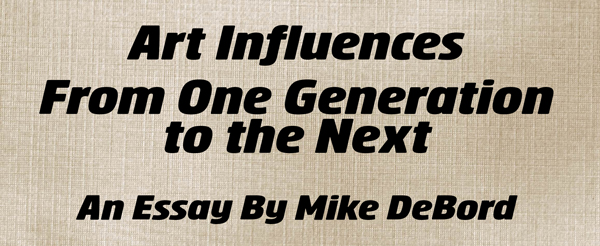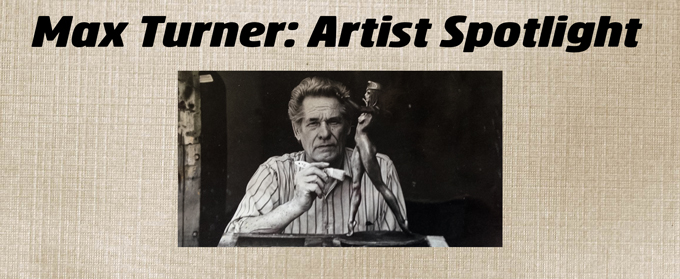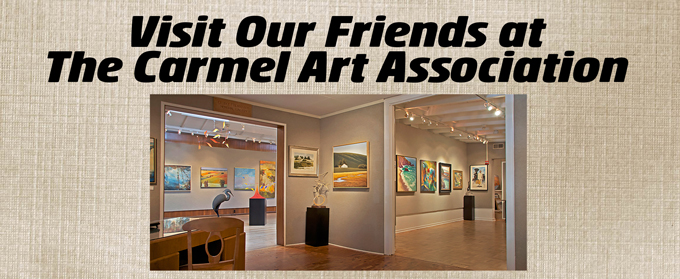By Mike DeBord
At the turn of the 20th century in Russia, 19-year old Nicolai Fechin wanted to become one of Professor Repin’s art students. Ilya Repin was the most renown Russian painter of the 19th century and getting into his studio at the St. Petersburg Academy was very difficult. Repin himself had been a student of the Academy as was his master, Ivan Kramskoy (1837-1887). To become Repin’s art student, Fechin needed his personal approval and he was given the opportunity to meet with the Russian master. Fechin was anxious but determined as he went for the first time to meet the great man. To his surprise, he was graciously granted permission to work in his studio as a student. Repin had recently been exposed to the new French Impressionist style of painting and its influence could be seen in Repin’s current paintings. Consequently, Repin became the link between Fechin and French Impressionism. Four years later, Professor Repin left the Academy when it temporarily closed during the Russo-Japanese War of 1904-05. Fechin and the other students, were left to their own resources. After four years of lessons with the master, Fechin said he felt a sense of liberation in his new pursuit of art and the next two years were the most essential to him as an artist.
Fast forward to the mid-1950’s in the United States. A 33-year old Joseph Nordmann very much wanted to become one of Nicolai Fechin’s art students. Fechin had become a Russian/American master, now living in Southern California, and Nordmann needed his personal approval to become one of his students. Nordmann called Fechin and was given the opportunity to meet with the master. Anxious but determined, Nordmann met with Fechin and to his surprise, he was granted permission to work in his studio as a student. As fate would have it, he became the “last student of Nicolai Fechin”. Fechin became the link between Nordmann and the Impressionist style of painting. When Fechin unexpectedly died on October 5, 1955, his students were shocked and left to their own resources. Three of these students, Joseph Nordmann, Albert Londraville and Hal Reed continued their pursuit of art and all went on to become professional artists and lifelong friends.
Thirty years after Fechin’s death, Nordmann wrote a highly-detailed article for Western Art Digest, Summer 1985, on his experience of being the “last student of Nicolai Fechin”. The article included several photos Nordmann had taken of Fechin’s work and of Fechin teaching his class, including the last photo ever taken of Nicolai Fechin. After Fechin’s death, Nordmann established a friendship with Fechin’s daughter Eya and learned more about his former instructor. Over the years, Nordmann visited Eya on his trips to Taos, New Mexico where Nicolai Fechin’s prior home became the Taos Museum of Art. Nordmann later became recognized as an accomplished artist himself and he gave lectures about his experiences in Fechin’s class and of Fechin’s life. In the first part of his life, Nordmann had been a college chemistry professor and teaching was a big part of his life. When he later mastered his own art techniques, he taught art at an adult school and gave many art workshops over the remainder of his 93-year life. The strong influence of Fechin on his student Joseph Nordmann never faded and he knew he had been in the presence of one of the great artists.
Likewise, former Fechin student, Albert Londraville, was strongly influenced by Fechin. Londraville followed in Fechin’s footsteps travelling to the Southwest, including Taos, New Mexico, to create charcoal drawings and paintings of Native Americans as Fechin had previously done. Hal Reed, the third of this group of Fechin students, created Art Video Productions, producing over two hundred 30-minute instructional videos, including two videos specifically on Fechin techniques that he had learned during the Fechin classes. After Fechin’s death, Reed gave many art classes, and one of the students in his portrait class was Max Turner whose drawings and paintings developed a strong Fechin-esque style. Turner became long-term friends with the three prior Fechin students-Reed, Londraville and Nordmann. Turner also became a very successful professional artist, drawing, painting and sculpting as Fechin had done so well.
These interrelated stories provide remarkable insight to art history; masters teaching students, and students developing their own techniques and styles. Sometimes these students become masters themselves, who in turn, unselfishly provide instruction to the next generation of students. And so it has been throughout time, artists sharing and influencing other artists who then are motivated to create their own unique niche in the world of art.




